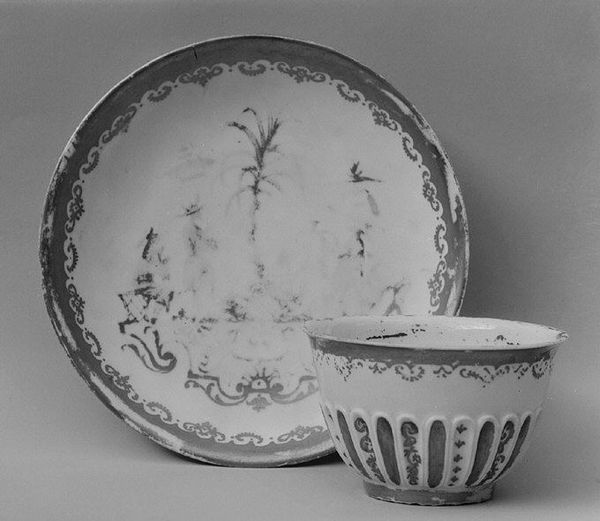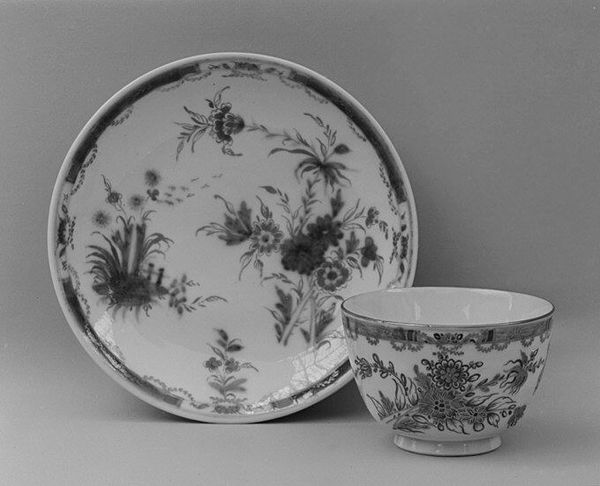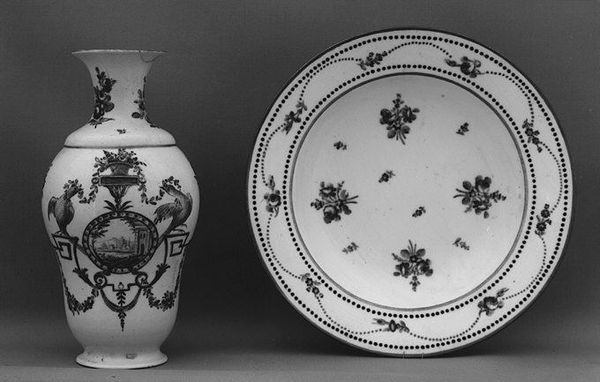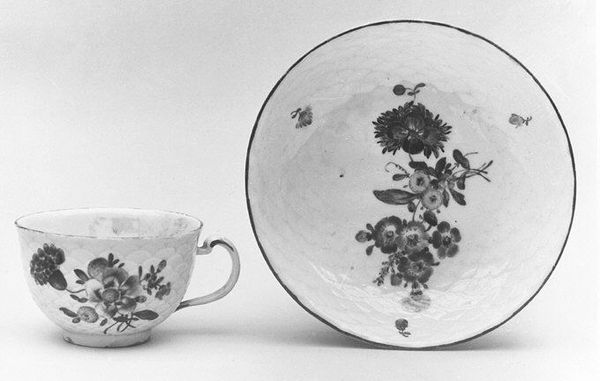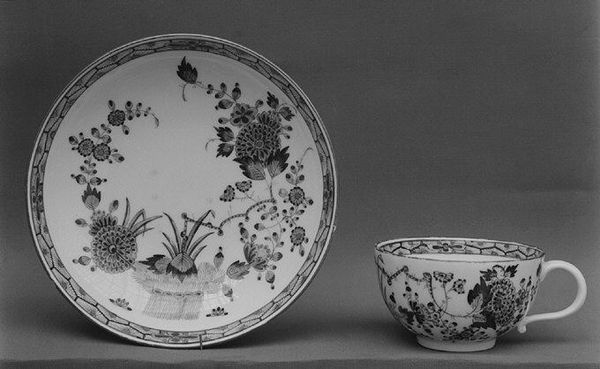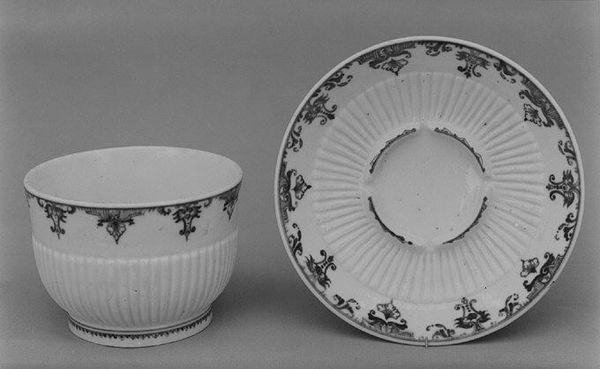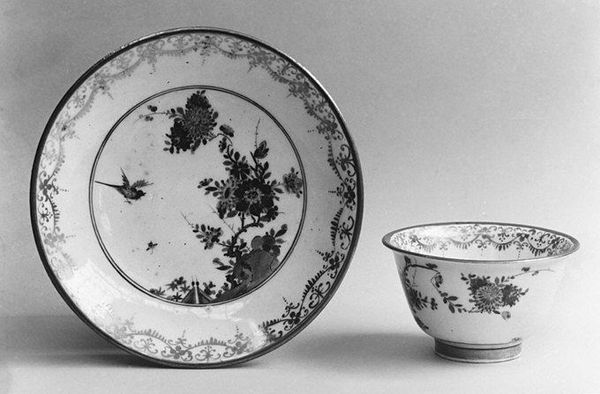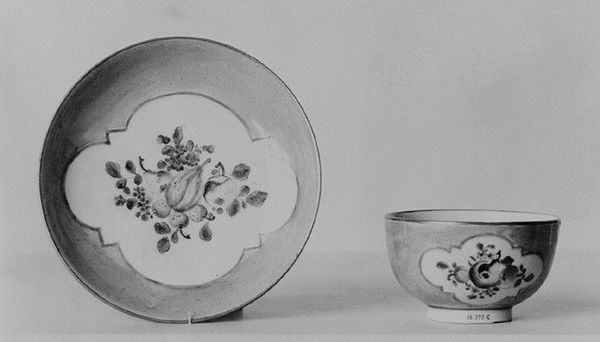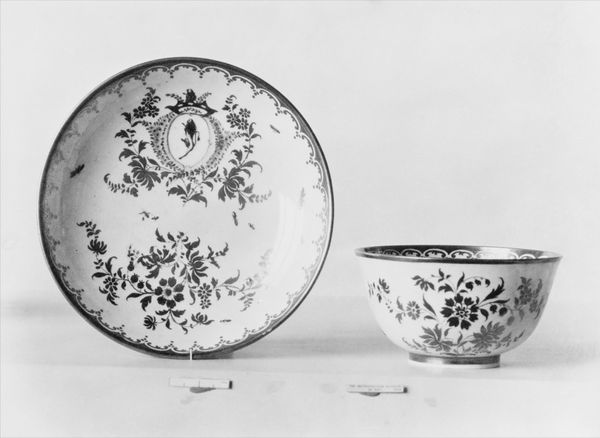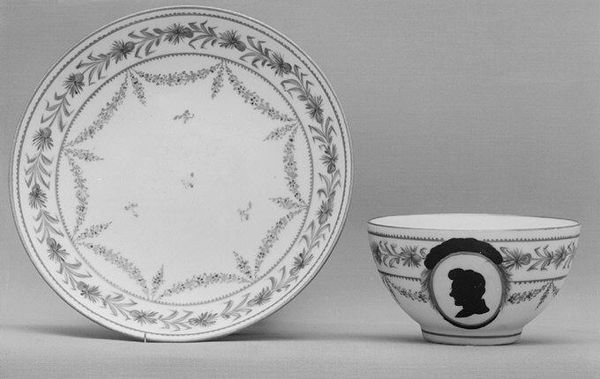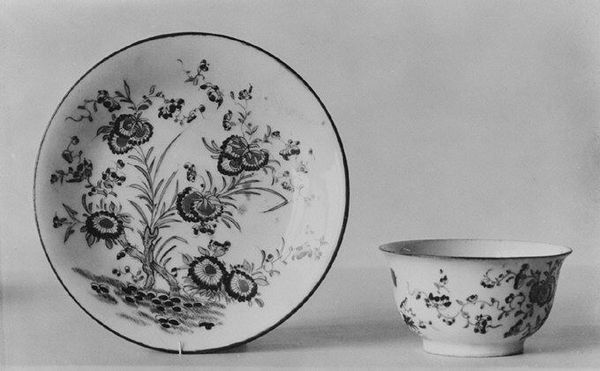
Dimensions: Diameter: 5 5/16 in. (13.5 cm)
Copyright: Public Domain
Editor: So here we have a saucer made of porcelain, crafted between 1780 and 1805 by Nyon. The botanical designs seem so delicate, almost… mass-produced? How would you interpret this piece? Curator: Consider porcelain itself, particularly during this period. It’s not just a material; it represents the culmination of specific labor practices and trade routes. These decorative arts existed in a nexus of production. Where did the materials originate? How did porcelain manufacturing impact craftspeople? Editor: That’s fascinating! I hadn't considered the sourcing and labor so explicitly. I was so focused on the… prettiness. Does the Rococo style tie into that industrial process as well? Curator: Absolutely. Rococo, with its emphasis on ornamentation, fueled a demand for detailed, luxury goods. Porcelain allowed manufacturers to replicate intricate patterns rapidly, essentially democratizing access to "high-end" aesthetics, albeit within specific social strata. We have to also remember the function of this saucer, presumably belonging to an upper class consumer. Editor: So the very act of decorating this porcelain, was itself affected by production techniques! Curator: Precisely. What appears as mere decoration actually embodies a complex relationship between art, industry, and social standing. The means of production shape what can be produced, and who has access. Editor: I see now! The "prettiness" masked the underlying processes of production and consumption, interesting. Thanks for shifting my perspective. Curator: Indeed. Thinking about these processes recontextualizes these objects, taking them beyond pure aesthetics to question social relations.
Comments
No comments
Be the first to comment and join the conversation on the ultimate creative platform.

